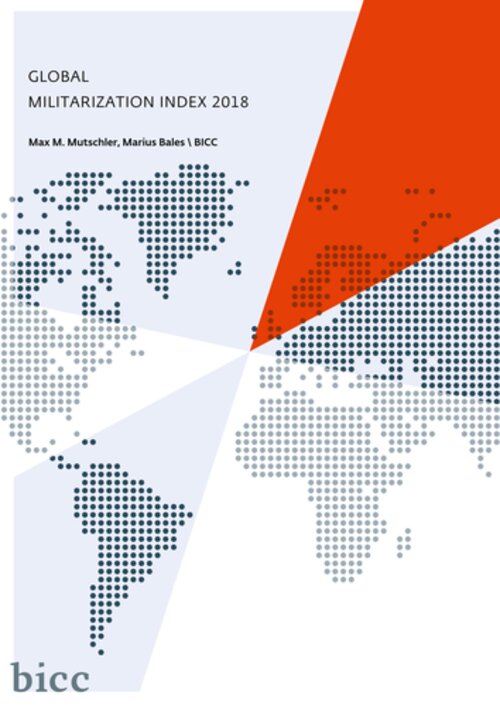Publications
Global Militarisation Index 2018
Release Date
2018-11
Language
- English
- German
Topics
- –
Compiled by bicc, the Global Militarisation Index (GMI) presents on an annual basis the relative weight and importance of a country's military apparatus in relation to its society as a whole. The GMI 2018 covers 155 countries and is based on the latest available figures (in most cases data for 2017). The index project is financially supported by Germany's Federal Ministry for Economic Cooperation and Development.
Israel, Singapore, Armenia, Cyprus, South Korea, Russia, Greece, Jordan, Brunei and Belarus are the top 10 worldwide.These countries allocate particularly high levels of resources to the military in comparison to other areas of society.
The GMI 2018 has a regional focus on Europe. The pressure exercised by the United States on European NATO countries to increase their military budgets has resulted in the fact that nearly all European member states have spent more money on the military than in the previous year. The number of military personnel and major weapons systems has also increased in many European countries. While Russia, again, is one of the most militarised countries worldwide, it drastically reduced its military spending in 2017 compared to the previous year.
Despite dwindling revenues from the oil trade, militarisation in the Middle East remains, by international standards, at a very high level. All countries in the region, with the exception of Iraq (position 41), can be found among the 30 most heavily militarised countries in the world. Algeria (position 15) and Morocco (position 24) are among the heavily militarised countries in North Africa. But most African countries, particularly those of Sub-Saharan Africa, can be found in the bottom part of the ranking.
This year’s GMI also examines the connection between particularly high or low militarisation and the political system of the respective countries. In doing so, it refers to the data from the Freedom House Index and the Polity IV Project of the Center for Systemic Peace. A quite ambiguous picture can be found: It is true that there are significantly more Not Free countries and autocracies among the countries with particularly high militarisation levels than among those with particularly low levels. But, conversely, a low level of militarisation, does not automatically go along with a high level of freedom of political system but often points to weak state structures and, thus, less control by the state.
PDF-Download

PDF-Download

Cite as
Document-Type
BICC Global Militarization Index
Publisher
bicc
Place
Bonn



